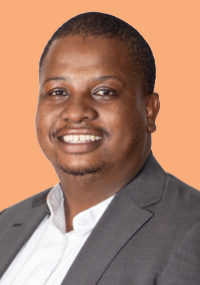August 2025
| DR GODFREY KGATLE, RESEARCH COORDINATOR, GRAIN SA |
 |
DURING THE HARVESTING SEASON, SOYBEAN FARMERS WERE URGED TO STAY ALERT WHEN REPORTS OF PURPLE STAIN, A DISEASE CAUSED BY CERCOSPORA KIKUCHII, SURFACED. THIS ARTICLE AIMS TO RAISE AWARENESS OF THE RISING INCIDENCE OF CERCOSPORA IN SOYBEANS, ITS SEEDBORNE NATURE, AND ITS IMPACT ON BOTH YIELD AND GRADING AT HARVEST.
In 2021, the University of Pretoria’s Forestry and Agricultural Biotechnology Institute (FABI), with support from the Department of Science, Technology and Innovation, the Technology Innovation Agency, the Maize Trust and Grain SA, launched a disease clinic focussed on grains. The clinic provides critical disease diagnostics and science-based guidance to farmers.
Since its establishment, it has reported increasing occurrence and distribution of anthracnose, stem canker (Diaporthe aspalathi), and notably, purple stain in soybean fields. These diseases can reduce seed quality, lower yields and compromise future crops if unmanaged.
STEPS TO ENSURE SEED HEALTH AND QUALITY
Cercospora, along with anthracnose, has been observed more frequently in recent years, raising concerns for those planning to retain seed for the next planting season.
Cercospora and Diaporthe are seedborne pathogens that can trigger disease outbreaks if infected seed is planted. Whether farm-saved or certified, farmers are urged to use healthy, treated seed to protect yields and prevent epidemics. Seed health is essential for strong emergence and disease resistance.
Poor-quality seed increases vulnerability to fungal pathogens and diseases such as Cercospora, Diaporthe and Sclerotinia. Hence, seed treatments using chemical and/or biological agents can enhance vigour, germination and early growth by protecting against seed- and soilborne pathogens, while minimising chemical inputs.
A glasshouse trial by Prof Sandra Lamprecht and Thabo Phasoana at ARC-Plant Health and Protection demonstrated the value of seed treatments in Sclerotinia-inoculated soil. Chemical treatments were more effective than biologicals alone, but the best results came from combining the two. These combinations effectively controlled diseases and eliminated viable sclerotia.
While benomyl fungicide improved good control of Sclerotinia, it did not address all damping-off pathogens. The trial confirmed that integrated seed treatment strategies, especially combining biocontrol and chemicals, significantly boost seedling health and establishment under disease pressure.
WHAT FARMERS SHOULD KNOW ABOUT SOYBEAN GRADING
IMPACT OF CERCOSPORA KIKUCHII ON SOYBEANS IN THE FIELD
Cercospora causes three primary diseases in soybean fields: Cercospora leaf blight (CLB), purple seed stain (PSS) and pod and stem blight.
These diseases, whether occurring individually or together, can significantly reduce the quality and profitability of soybean crops.

Cercospora on soybeans causes three diseases: (A) Cercospora leaf blight, (B) purple seed stain (PSS) and (C) pod and stem blight.
CONCLUSION
With Cercospora rising in South African soybean fields, farmers must prioritise seed health to safeguard future yields. Early disease detection and the use of treated, certified seed can prevent outbreaks and improve crop resilience. Integrated seed treatment strategies offer adequate protection and should be part of every grower’s disease management plan.
Please contact the Grain SA research team if you need assistance with pest and disease diagnostics.
Publication: August 2025
Section: Pula/Imvula